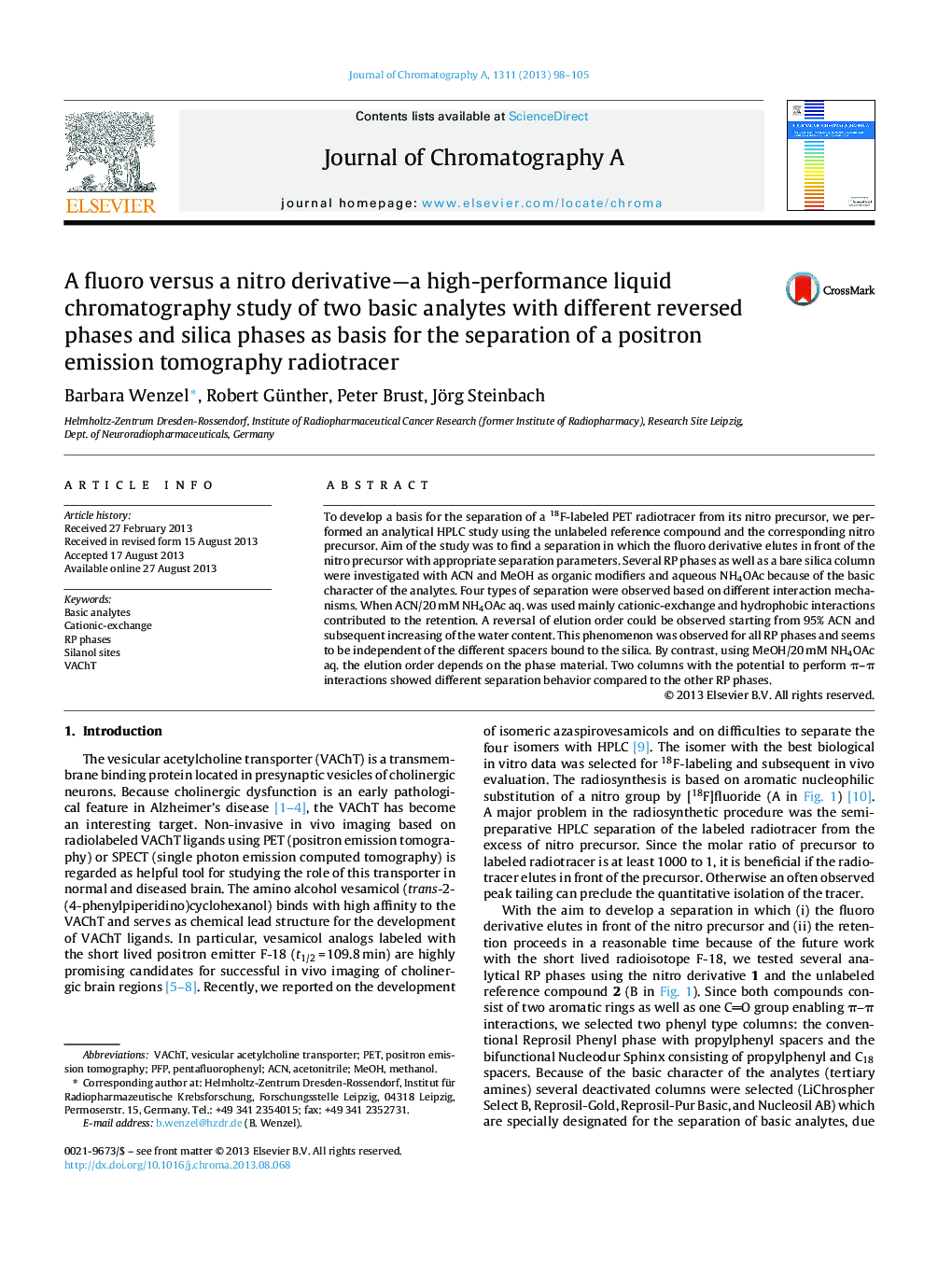| Article ID | Journal | Published Year | Pages | File Type |
|---|---|---|---|---|
| 1201149 | Journal of Chromatography A | 2013 | 8 Pages |
•The RP-HPLC separation of a 18F-labeled radiotracer and its nitro precursor was developed.•The favored elution order of radiotracer/precursor was obtained.•Possible retention mechanisms of these two basic analytes are discussed.•Strong hydrophobic phases are suitable for the separation when ACN is used as organic modifier.•A pentafluorophenyl and a cyano phase are suitable when MeOH is used.
To develop a basis for the separation of a 18F-labeled PET radiotracer from its nitro precursor, we performed an analytical HPLC study using the unlabeled reference compound and the corresponding nitro precursor. Aim of the study was to find a separation in which the fluoro derivative elutes in front of the nitro precursor with appropriate separation parameters. Several RP phases as well as a bare silica column were investigated with ACN and MeOH as organic modifiers and aqueous NH4OAc because of the basic character of the analytes. Four types of separation were observed based on different interaction mechanisms. When ACN/20 mM NH4OAc aq. was used mainly cationic-exchange and hydrophobic interactions contributed to the retention. A reversal of elution order could be observed starting from 95% ACN and subsequent increasing of the water content. This phenomenon was observed for all RP phases and seems to be independent of the different spacers bound to the silica. By contrast, using MeOH/20 mM NH4OAc aq. the elution order depends on the phase material. Two columns with the potential to perform π–π interactions showed different separation behavior compared to the other RP phases.
